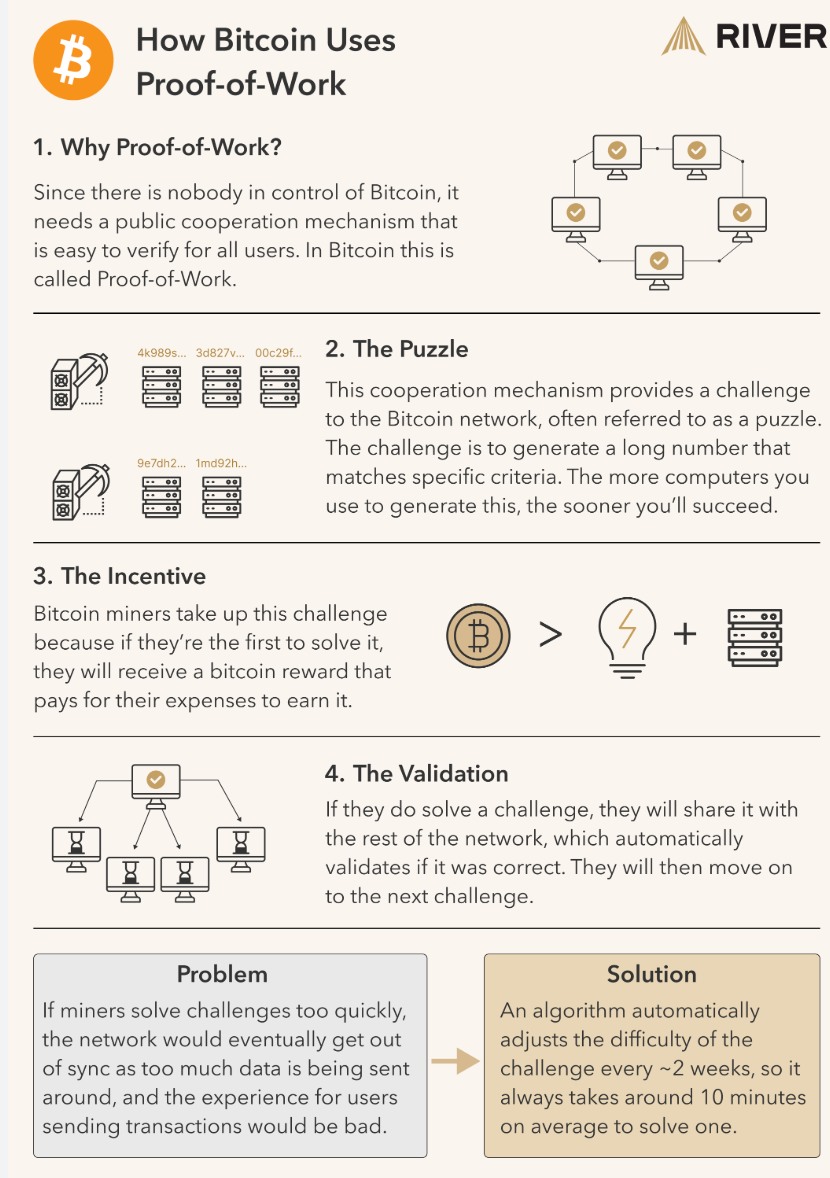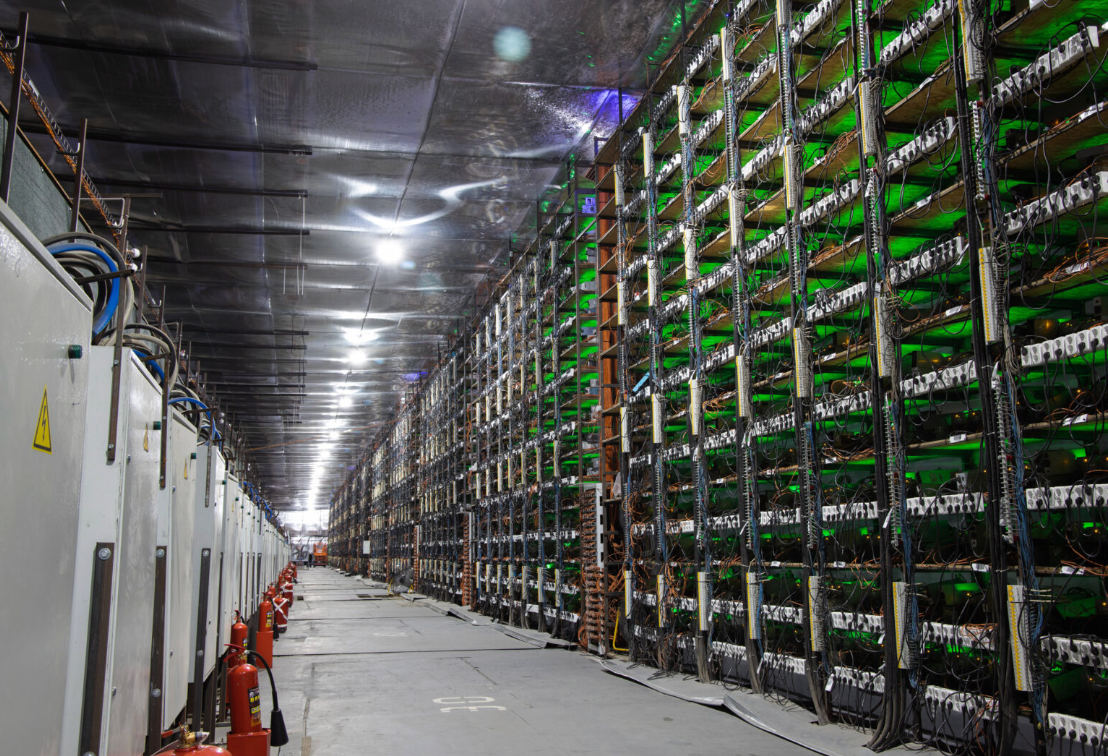Bitcoin’s network hashrate surpassed 700 exahashes per second (EH/s) in early 2025, a testament to the immense computational power securing the world’s largest cryptocurrency (1). But what exactly is Bitcoin mining, and how does it keep the entire system running without a central authority? At its core, Bitcoin mining is the process of validating transactions, preventing double-spending, and introducing new bitcoin into circulation. Miners act as decentralized auditors and lottery participants rolled into one. They compete to solve complex mathematical puzzles, and the winner earns the right to add a new block of transactions to the blockchain along with a reward in freshly minted BTC. Whether you’re searching for what Bitcoin mining is, how Bitcoin mining works, or Bitcoin mining explained in simple terms, this comprehensive guide breaks it all down. By the end, you’ll understand the full Bitcoin mining process, the hardware behind it, and whether mining makes financial sense in 2025.
What Is Bitcoin Mining?
Think of Bitcoin mining like a digital bookkeeping contest combined with a lottery. Miners collect pending transactions, verify their legitimacy, and package them into a “block.” To earn the right to add this block to the blockchain and claim the reward they must solve a cryptographic puzzle. This mechanism, known as proof-of-work (PoW), ensures no one can fake transactions or spend the same bitcoin twice (2).Without miners, Bitcoin would be vulnerable to fraud. Their work makes the network trustless, immutable, and decentralized.
How Bitcoin Mining Works: The Step-by-Step Process

Transaction Collection (Mempool)
Every Bitcoin transaction starts when a user sends BTC to another wallet. These transactions are broadcast to the network and land in the mempool which is a waiting area managed by full nodes. Miners scan the mempool and prioritize transactions with higher fees, much like a marketplace where users “bid” for faster confirmation (3).
Building a Block Candidate
Miners assemble a block candidate (limited to about 1 MB after SegWit). The first transaction in every block is special: the coin’s base transaction is where the miner claims their block rewards and collects their tokens. The rest of the block is filled with pending transactions from the mempool (4).
Proof-of-Work (PoW) Explained

This is where how Bitcoin mining works gets technical. Miners take the block header which is a summary of the block and repeatedly hash it using the SHA-256 algorithm, tweaking a random number called the nonce with each attempt. The goal? Produce a hash below a dynamically adjusted target value (5).
The lower the target, the harder the puzzle. The first miner to find a valid hash broadcasts their block to the network. Other nodes verify the solution in seconds, and if valid, the block is added to the blockchain.
Block Propagation & Chain Validation
Once a block is solved, it spreads across the network in under a second. Nodes validate the block and begin working on the next one. On average, a new block is added every 10 minutes (5). If two miners solve a block at nearly the same time, a temporary fork occurs but the longest chain wins, and the shorter branch becomes an orphan block.
Reward Distribution

In 2025, the Bitcoin block reward is 3.125 BTC per block, following the April 2024 halving. Miners also collect transaction fees, which typically add 1–3 BTC per block during high network activity (6). Total payout: ~4–6 BTC per block in a bull market.
Bitcoin Mining Hardware Evolution
Bitcoin mining hardware has evolved dramatically since 2009. In the early days, anyone could mine using a standard CPU, generating just a few megahashes per second. By 2011, enthusiasts switched to GPUs, boosting performance to hundreds of MH/s. The game changed in 2013 with the arrival of ASICs (Application-Specific Integrated Circuits) machines built exclusively for SHA-256 hashing (7). Modern ASICs like the Bitmain Antminer S21 deliver 200–500 terahashes per second (TH/s) at efficiencies around 15 joules per terahash (J/TH) (8). Compare that to a high-end GPU today, which might hit 100 MH/s while consuming far more power per hash. ASICs have made CPU and GPU mining obsolete for Bitcoin, though they remain relevant for other cryptocurrencies.
The Role of Mining Pools

Solo mining is like playing the lottery with one ticket against millions of others. That’s why over 99% of miners join mining pools groups that combine hashrate and share rewards proportionally (9).
Popular payout models include:
- PPS (Pay Per Share): Fixed payout per hash submitted, regardless of block luck.
- FPPS: PPS + expected transaction fees.
- PPLNS (Pay Per Last N Shares): Rewards based on shares near block discovery.
Bitcoin Mining Difficulty & Halving Cycles
Bitcoin’s difficulty adjusts every 2,016 blocks (~2 weeks) to maintain a 10-minute block interval. If more miners join and hashrate rises, difficulty increases. If hashrate drops, difficulty decreases (11).
The halving a pre-programmed event every 210,000 blocks cuts the block reward in half:
- 2024 → 3.125 BTC
- 2028 → 1.5625 BTC
2032 → 0.78125 BTC

Eventually, around the year 2140, no new bitcoin will be created. Miners will rely entirely on transaction fees.
Is Bitcoin Mining Profitable in 2025?
Key Profitability Factors
Mining profitability depends on three main variables:
- Electricity cost: Industrial miners pay $0.03–$0.05/kWh; home users often face $0.12–$0.15 (12).
- Bitcoin price: Higher BTC = higher USD value per reward.
- Hardware efficiency: Newer ASICs use less power per terahash.
A single Antminer S21 (200 TH/s) at $0.05/kWh and $100,000 BTC might earn ~$12–$15 per day after costs. But upfront hardware costs ($2,000–$3,000) and cooling/noise make home mining challenging.
How Bitcoin mining works boils down to one elegant idea: proof-of-work turns electricity and computation into unbreakable digital scarcity. Miners secure the network, validate billions in transactions daily, and are rewarded with new bitcoin and fees. As we approach the end of Bitcoin’s issuance phase, the role of miners will shift from subsidy to fee-based economics. But for now, mining remains the engine of Bitcoin’s security and decentralization.
FAQ
How does Bitcoin mining work?
Miners compete to solve SHA-256 puzzles (proof-of-work) to validate transactions and earn 3.125 BTC + fees.
What is the Bitcoin block reward in 2025?
3.125 BTC per block (post-2024 halving).
Can I mine Bitcoin with a GPU in 2025?
No—ASICs dominate due to 1,000x greater efficiency.
How much electricity does Bitcoin mining use?
~150 TWh annually (2025 est.), comparable to the Netherlands.
Recourses
- “Bitcoin Hashrate Chart” (2025).
- Nakamoto, S. (2008). “Bitcoin: A Peer-to-Peer Electronic Cash System.”
- “How Bitcoin Works” (Developer Guide).
- “Block” (2025).
- Nakamoto, S. (2008). “Bitcoin: A Peer-to-Peer Electronic Cash System.”
- Bitcoin Block Reward Halving Schedule
- The Evolution of Bitcoin Mining Hardware” (2024).
- Antminer S21 Specifications (2025).
- Mining Pools Explained
- Nakamoto, S. (2008). “Bitcoin: A Peer-to-Peer Electronic Cash System.”
- Regional Electricity Prices
The information provided in the blog posts on this platform is for educational purposes only. It is not intended to be financial advice or a recommendation to buy, sell, or hold any cryptocurrency. Always do your own research and consult with a professional financial advisor before making any investment decisions. Cryptocurrency investments carry a high degree of risk, including the risk of total loss. The blog posts on this platform are not investment advice and do not guarantee any returns. Any action you take based on the information on our platform is strictly at your own risk. The content of our blog posts reflects the authors’ opinions based on their personal experiences and research. However, the rapidly changing and volatile nature of the cryptocurrency market means that the information and opinions presented may quickly become outdated or irrelevant. Always verify the current state of the market before making any decisions.



.png)

.png)
.png)




